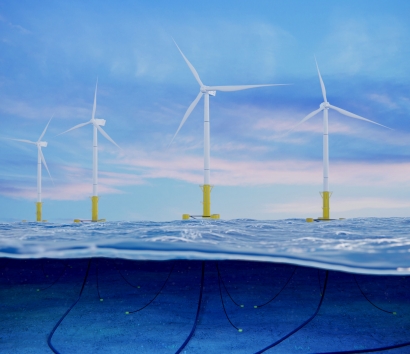
Today, every offshore wind project is designed and built differently with bespoke parameters, including type of turbine, foundation requirements, site layout, deployment ports, and contractors. This variance from project-to-project requires large amounts of working capital, slowing project investment across the industry. It also blocks economies of scale, inhibits quality management for project construction, and extends construction schedules – cumulatively costing billions of dollars in wasted time and investment.
Robert Speht, Co-Founder & CEO of FloatWind comments, “In an era where we are all collectively striving for net zero, adapting and learning from best practice in other sectors is key. Industries such as automotive and aerospace recognize that moving away from a batch production process to mass assembly is vital in enabling the reduction of costs and improving the speed of deployment. This in turn leads to reaching net zero quicker, better investment returns, and consumers benefiting from better energy prices sooner; the potential for the offshore wind market is incredibly exciting.”
FloatWind contests the current perception that floating turbines are a futuristic technology only suitable for deeper water deployment. The company believes a standardized, ready-to-float solution suitable for deployment in shallow and deep water can provide an answer. As the industry strives for the lowest CAPEX and highest possible ROI, FloatWind’s Ready-to-Float concept is assembled at the harbor side and installed using readily available ocean-going tugboats which tow the turbine to location and simply tether it in place. Even for shallower wind farms, this will provide a faster, more cost-effective and safer alternative to current assembly at sea approaches that require costly jack-up and installation vessels.
Gary McIntyre, Lean Manufacturing Specialist at FloatWind added, “Offshore wind projects worldwide are now a $900 billion pipeline and rising. Floating wind is consistently cited as the next frontier, but as the industry gains momentum, more needs to be done to boost investor confidence and reduce costs. There is no doubt that offshore wind can benefit from tried-and-tested lean manufacturing and just-in-time techniques from other industries. The mass-assembly approach has the ability to accelerate the achievement of net zero targets and reduce the amount consumers pay for energy. Now is the time to revolutionize and FloatWind is at the forefront of leading that charge.”
FloatWind is the first to apply tried-and-tested lean manufacturing and just-in-time techniques from other industries to enable the mass-assembly of floating offshore wind turbines. The FloatWind Production System produces Ready-to-Float turbines that are assembled at the harbor side, and then floated out to location, making installation faster, more cost-effective, and safer.

